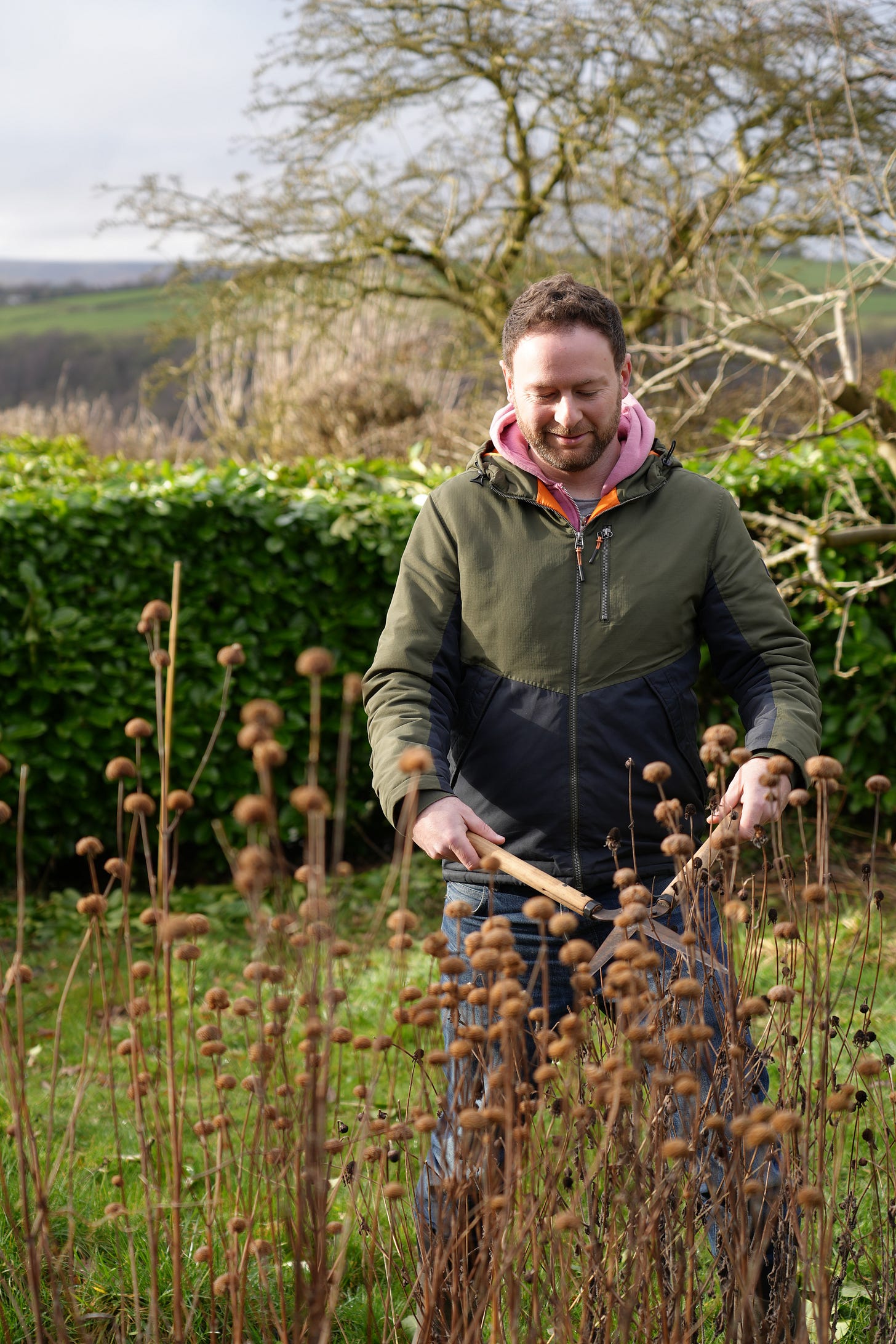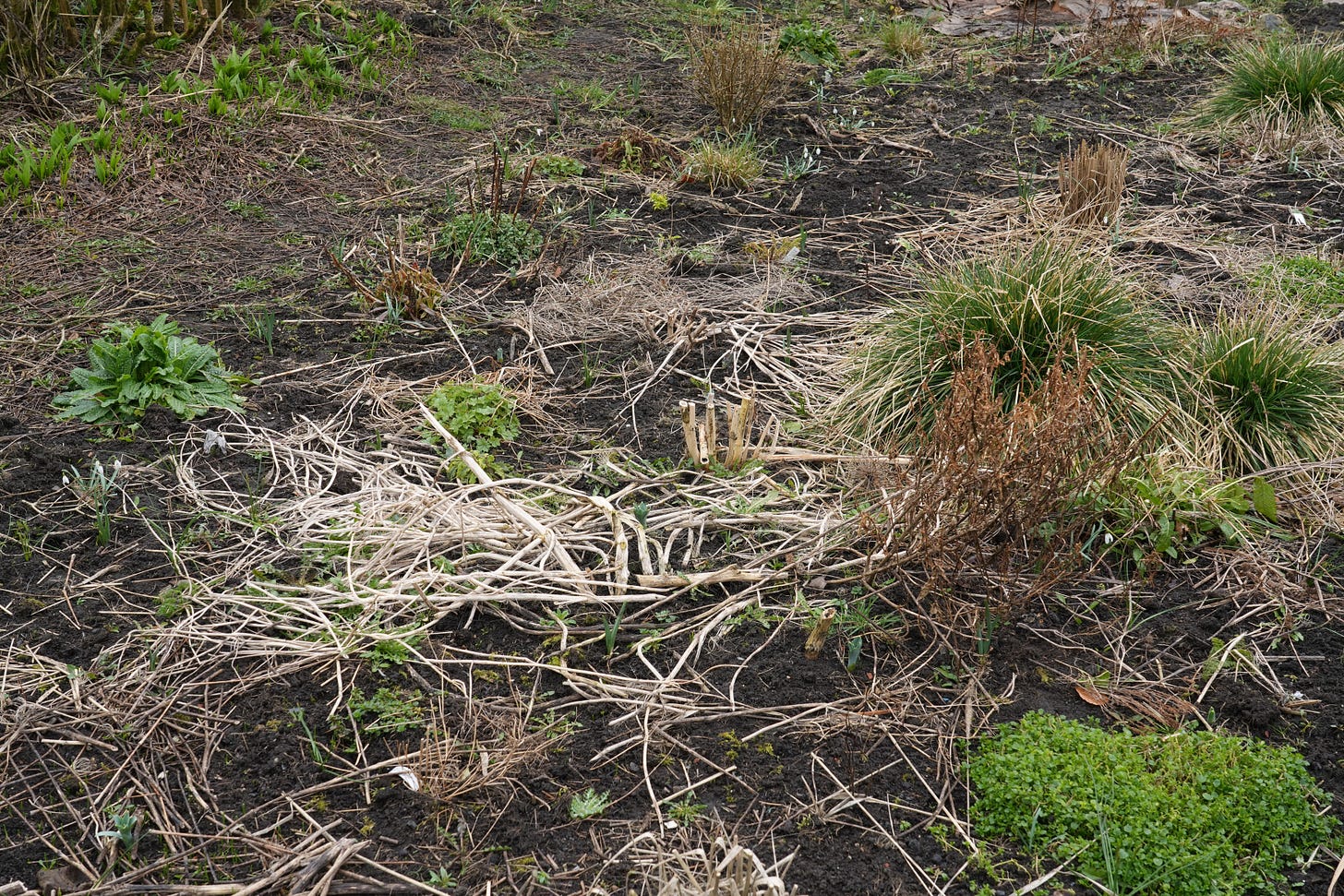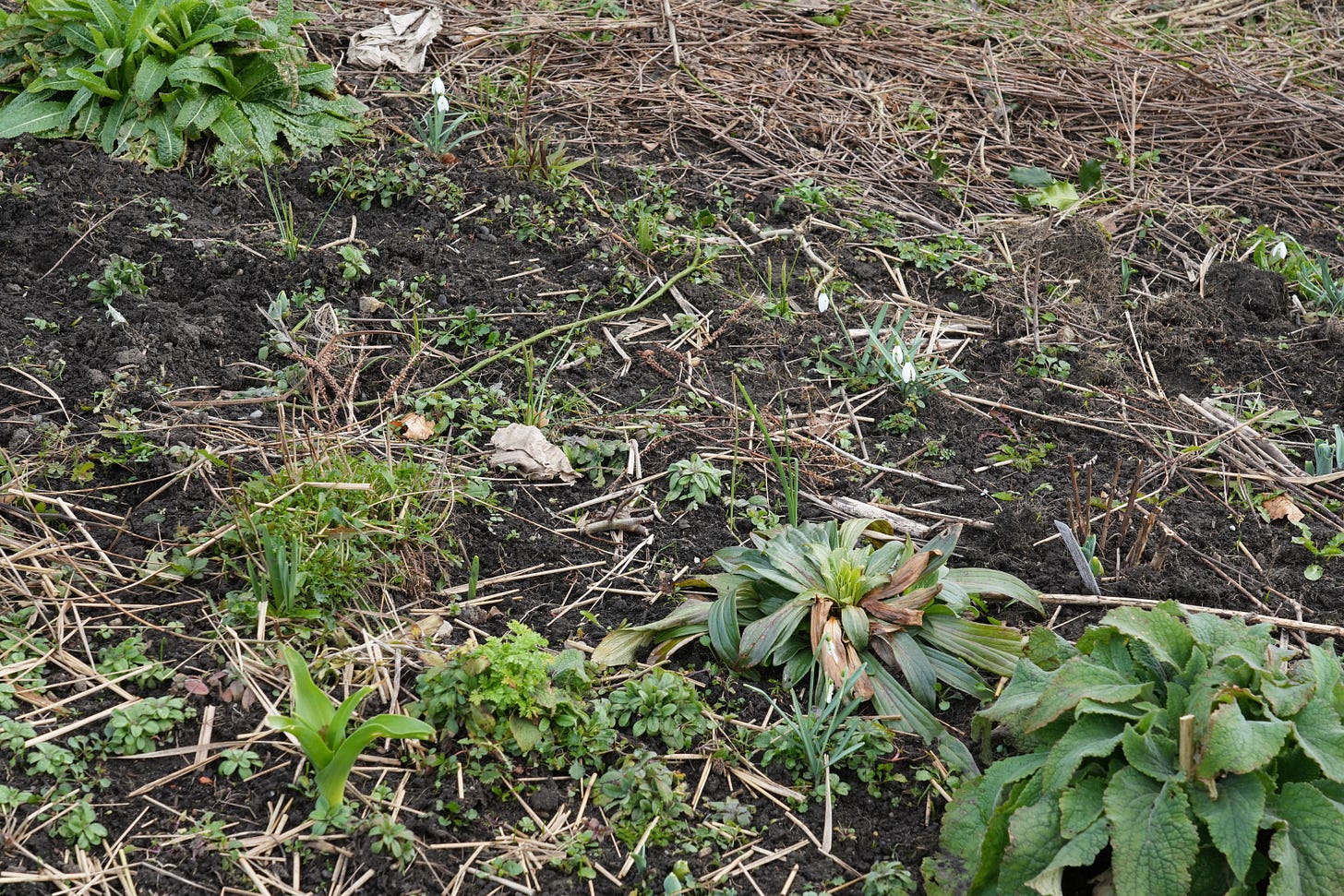Cut and chuck plants to feed your garden
Cut back and leave dead material on flower borders to decompose the wild way
I’ve been cutting and chucking (later called chop and drop by some) the clippings of perennials my entire life, it’s the wild way; what happens in nature and it works well in gardens. At the end of winter, just as the weather warms up and insects living in the dead plant material are waking up, cut back remaining stems into little bits leaving them to decompose naturally.
Cutting and chucking around your planting areas saves you having to cart everything to a compost heap and then cart it back in future. Horticulture has always said this removes nitrogen from soils as soil life uses the nitrogen for decomposition, but that never made sense to me because in the wild, plants grow happily through decomposing leaves and other plant material.
Time it so that you are cutting back just as winter is over, and before most of your bulbs are fully up. Sometime in late-February usually works for me. Some people have started calling this simple technique ‘chop and drop’ but whatever you call it, it’s cutting back and letting nature get on with what it does best.

Traditionally removing dead material has also been done in gardening for aesthetic purposes, to “tidy things up”, though professional horticulture has also, perhaps wrongly, put an emphasis on plant health. For example, gardening books told us dead plant material is habitat for slugs and snails or fungal diseases - but they had it the wrong way around, these are all garden helpers! They are food for other wildlife and break down the dead plant matter.
So, the wild way throws all that out the window. Or in fact, does something much less strenuous.
In the wild, perennial and annual plants aren’t cut back and removed to a compost heap. Woodland animals don’t wheel in little barrows of compost mulch. Plants are either left standing as dead plant material, eaten by herbivores or snapped by wind and rain to lay on the ground, speeding up the decomposition process.
The wild way is to embrace a jumble of living and dead plant material. Dead stuff stays around the same area and is decomposed around the plant it came from or returned as poo somewhere in the area - helpfully deposited by the likes of slugs and snails. I’ve actually noticed that by leaving plants standing over winter, the majority have already collapsed naturally. Soil life, above and below ground, break it all down into usable nutrients for plants to eventually use again.

Traditional gardening tells us we need an extra step, to cut away the dead tatty material, take it to a compost heap, turn it into compost, and then bring it back to be spread as a mulch.
While this is no bad thing - making compost is good! - and in certain areas you probably will, you don’t have to. The wild shows us there is another way, which is: we can just leave it!
I began the wild way of preparing a garden for spring in our small urban courtyard in London and it worked brilliantly, repeating it on my allotment and in some gardens I’ve designed.
It’s easy, all I do is cut up dead perennial stems, or those like Penstemon that are still partly alive to reduce their height, and chuck the cut material around the plants on the ground. Cutting them into small pieces between 3 - 10cm long using shears and secateurs
Of course, the truest form of the wild way is to cut nothing at all, let nature take over and enjoy the show. However, like grassland clearings, often the wild relies on herbivores to cut it back by eating and trampling it, maintaining a balance and preventing large plants from taking over by shading smaller plants.
Garden space can be entirely wild if you would like it, and you can embrace different levels of input. In our main garden I am trying to establish an ecosystem that is beautiful to us but critically, extremely useful to insects and birds. To maintain that balance of enhanced planting for these animals, I need a minimal amount of pretending to be a herbivore… actually, I’m vegetarian so I am a herbivore, so I should say, a herbivore prepared to eat lots of dead ornamental plants!
By cutting back dead plant material and scattering it around the plants, I am giving the new shoots access to light and us more access to see them, while adding plant material into the soil as happens in the wild. This is fundamentally different to the concept of ‘tidying up a garden’, tidying doesn’t even cross my mind when I am cutting back perennials.
My action is to speed up the natural plant decomposition process by getting it to the soil and breaking it up, keeping it where it would naturally have fallen to feed the soil. Keeping the plant material where it is also keeps the material where it’s needed by any insects or other life using it, for food or shelter.
It keeps much of the carbon locked in the plant in that spot in the garden. Over the last five years since practicing this, I have found no need for additional mulch because the plant material over time does the job, improving each year.
Cutting and leaving plant material on the soil creates a new visual aesthetic that traditionalists will feel is messy or untidy. I personally see this mindset as the result of brainwashing from other people as to what a garden should consist of, because we don’t look at the wild and think “oh how untidy”.
The very concept of tidiness and tidying up in gardens never crosses my mind in planting areas, only on paths or patios where we need a bit of clearing for safety and framing. Over the course of March and April, growing plants will cover and hide the dead material on the ground anyway.
As years go on, I can feel myself rejecting the neatness of traditional gardens because it feels fake, because I know it is less good for wildlife. If you’re new to wild gardening, it may help if I explain how I see it. I think of planting areas with dead plant material and wildlife, as well as living plants, as works of living art.
Imagine if you could frame a square of your garden and put it in an art gallery on the wall. How fascinated people would be to see all of the things within it. The depth behind what is going on, what you can see, and how it will change with every single day.
When I think of it like this, the wild way has a depth to me that traditional methods can never hope to achieve. Life, living things, the process of life and change, that is beauty, recognising it, is art.








I love the idea of cutting clippings around a lopped perennial as mulch. It makes perfect sense.
I think I'll do a mix. There are quite a few shrubs there already - Kolkwitzia, hydrangeas and a couple called something like macrocordia The Bride but most of the planting is foxgloves, veronicastrum, stipa giagantea, geraniums, alchemilla mollis, and Veronica gentioanoides which seems to spread everywhere. I think most of the plants would probably get through a certain amount of leaves.
I heard Matt Pottage from Wisley talking last week at an NGS thing and he said that they had problems with their soil because generations of gardeners had raked the leaves off every year. I think he's changing the policy - he must have read your book!